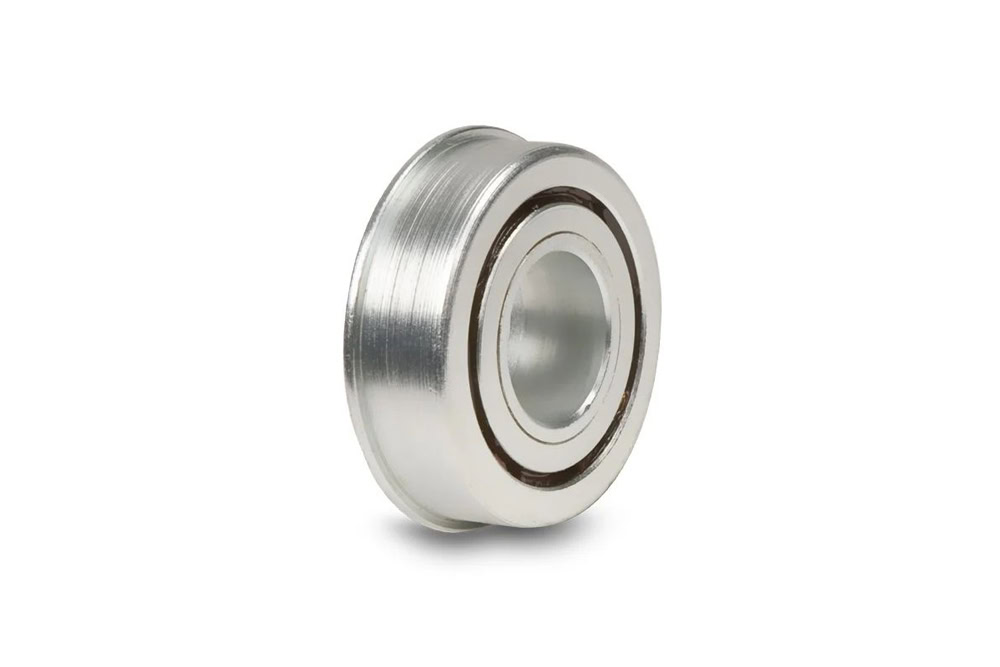
Bearing Manufacturer & Supplier
Specialize in ball bearings, roller bearings, thrust bearings, thin section bearings etc.
Advantages and Disadvantages of Flange Bearings
Flange bearings are a specially designed bearing, which is characterized by a flange on the outer or inner ring of the bearing. This design not only enhances the structural strength of the bearing, but also provides convenient installation and positioning functions. Flange bearings are widely used in various mechanical equipment, especially in situations where they need to withstand heavy loads and high-speed rotation.
Table of Contents
ToggleAdvantages of flange bearings
Strong load-bearing capacity: Due to the effect of the flange, flange bearings can withstand large axial, radial and torque loads. This makes it widely used in high-load and high-speed mechanical equipment.
High speed: Due to the characteristics of rolling friction, flange bearings can withstand higher speeds. This makes it widely used in mechanical equipment that requires high-speed rotation.
Small friction coefficient: Flange bearings using rolling friction have a smaller friction coefficient than sliding friction. This not only reduces power consumption, but also reduces wear and heat generation, thereby increasing the service life of the bearing.
Compact structure: The overall structure of the flange bearing is simple, and installation and maintenance are relatively convenient. At the same time, due to the presence of the flange, it can be directly connected to other components, reducing additional installation procedures and parts, thereby reducing installation costs.
Wide range of applications: Flange bearings are suitable for various types of mechanical equipment and working environments. Whether it is heavy equipment on an industrial production line or small components in precision instruments, you can find suitable flange bearing applications to meet your needs.

Disadvantages of flange bearings
Although flange bearings have many significant technical advantages, they also have some disadvantages and challenges in practical applications:
High manufacturing cost: Since flange bearings require high-precision manufacturing and high-quality materials, their manufacturing costs are usually high. This may increase the overall cost of mechanical equipment and limit some cost-sensitive application scenarios.
High requirements for installation accuracy: The installation accuracy of flange bearings has an important impact on their performance and service life. If improperly installed, it may cause problems such as eccentric loading, vibration, and premature wear of the bearing. Therefore, special tools and methods are required when installing flange bearings to ensure the correct installation accuracy.
Difficulty in maintenance: In some modern mechanical equipment, due to the complex structure and position of flange bearings, it may be difficult to maintain and replace them. This may require professional technicians and special tools, increasing maintenance costs and time.
Sensitive to the working environment: Although flange bearings have high corrosion resistance, their performance may be affected in some extreme working environments, such as high temperature, high humidity or corrosive media. In these cases, special materials need to be selected or additional protective measures need to be taken to protect the bearings.
Limited by flange design: Although the flange design of flange bearings provides convenient installation and positioning functions, it also limits their use in certain specific application scenarios. For example, in some equipment that requires a compact structure or a special installation method, standard flange bearings may not meet the requirements.
Conclusion
Flange bearings play an indispensable role in modern industrial machinery with their strong load-bearing capacity, compact structure, low friction coefficient, high speed and wide range of applications. When selecting and using flange bearings, it is necessary to comprehensively consider factors such as their performance, cost and maintenance requirements to ensure that they can adapt to specific application scenarios and needs.



